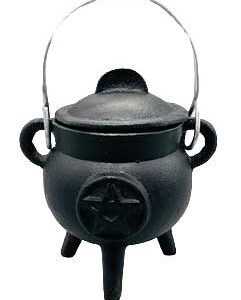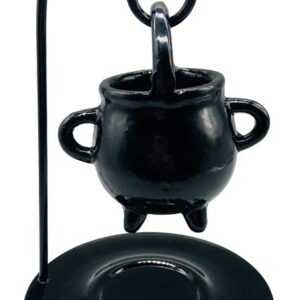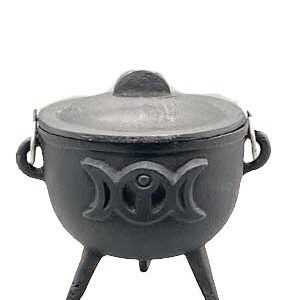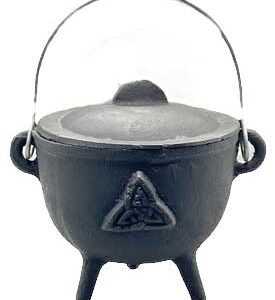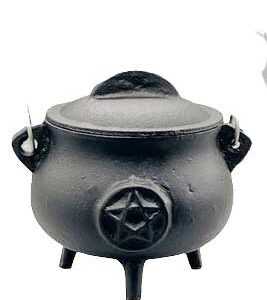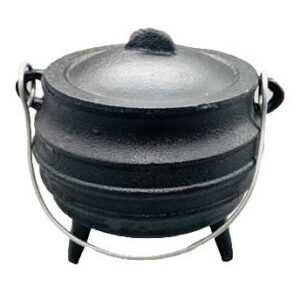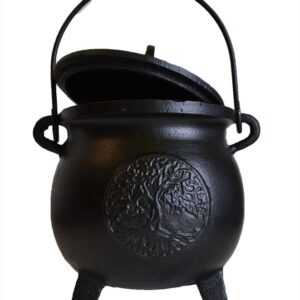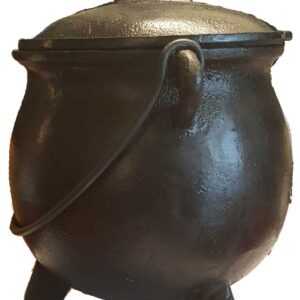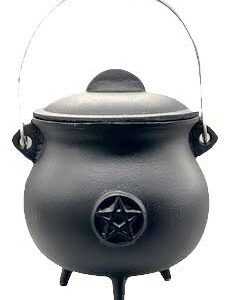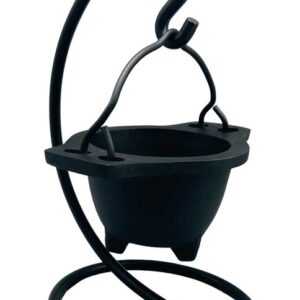Showing 1–24 of 34 results
3 3/4″ cast iron cauldron
$10.765″ cast iron cauldron w/ lid
$27.86Cast Iron Cauldron 3″
$13.46Cast Iron Cauldron 6″
$21.56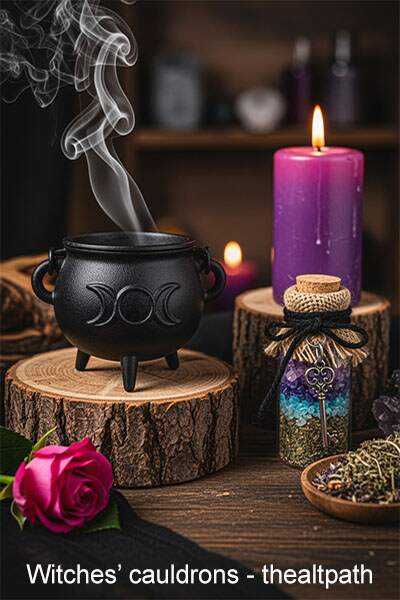 The witch’s cauldron holds meaning in many forms of witchcraft. Witches use it to burn herbs, brew blends, or send gifts to spirits. So, it stays a symbol of change and focus work. We carry many cast iron cauldrons in-store, ready for daily practice. Also, you can follow us on Instagram or Facebook to see new items.
The witch’s cauldron holds meaning in many forms of witchcraft. Witches use it to burn herbs, brew blends, or send gifts to spirits. So, it stays a symbol of change and focus work. We carry many cast iron cauldrons in-store, ready for daily practice. Also, you can follow us on Instagram or Facebook to see new items.
A witch’s cauldron deserves a shop that cares. We keep our shelves stocked and ship fast when ordered online. Also, we offer helpful support when choosing a size or symbol. All payments are secure for peace of mind. We pack with care and send orders quickly. Plus, we offer free shipping on orders over $50, making it simple to get what you need.
The Witch’s Cauldron: A Historic Look
The witch’s cauldron appears in old lore and sacred tales. In Celtic stories, Cerridwen brewed a blend of learning and deep inner change. So, many modern witches view the vessel as a guide for growth. The story reminds us that learning takes time, patience, and steady practice.
Many tales show the cauldron as a place of release and new start. It reflects cycles of letting go and starting again. Also, witches today draw meaning from these roots. The cauldron stands as a sign that change comes from choice, effort, and care.
The Role of the Witch’s Cauldron
Witches use the witch’s cauldron for work such as burning herbs, brewing tea blends, or making an offer of incense. So, the cauldron helps keep focus during spell work. Fire often sparks the force behind work and sets the path for the spell.
The cauldron can shift its role based on need. Some call on it for a guard or ward. Also, others use it for clearing old weight or calling in healing. Because it adapts well, the cauldron remains a central altar tool.
Sizes and Uses: Cast Iron Cauldrons
Cauldrons come in many sizes to meet many needs. Small cauldrons support incense or tiny blends for solo work. Also, larger cauldrons can hold shared blends or group work. Because of these choices, witches often pick cauldrons that fit their style and practice.
Cast iron holds heat well and lasts for years. It allows steady burning and brewing with care. Also, cast iron carries a grounded feel that many witches enjoy. So, cast iron remains a favorite for long-use ritual tools.
The Cauldron as a Symbol of the Elements
The witch’s cauldron can show the four natural forces. Water appears when used for brewing. Air appears when herbs burn and smoke rises. Fire appears when flame burns inside. Also, Earth appears in the heavy shape and weight. So, the cauldron helps connect the witch to nature’s core balance.
Many witches call on the four during spell work. They honor each force as part of the world and self. Also, this practice helps keep balance in the working. The cauldron becomes a steady link to those forces.
The Cauldron and Altar Supplies
The witch’s cauldron often sits at the altar’s center. Its spot helps keep focus on the main working. Also, witches use sand inside the cauldron to guard cloth and altar surface from heat. This keeps the space safe and steady for burning or brewing.
The round shape of the cauldron supports calm and unity. It reminds the witch to stay centered during work. Also, it helps create a sense of sacred space. So, the cauldron remains a strong anchor on most altars.
Pagan and Wiccan Symbols on Cauldrons
The witch’s cauldron often ties to the Triple Moon. The shape reflects the cycle of life, death, and new life. Also, it invites thought on personal stages and growth. So, many witches choose cauldrons marked with the Triple Moon.
Some cauldrons show the Triquetra or the Pentagram. These signs can guide focus and aim during spell work. Also, they help connect belief, craft, and your path. So, the cauldron becomes both a tool and a teacher.
Using Cauldrons for Offerings and Ritual
Witches use the witch’s cauldron to burn herbs or incense as gifts. Smoke carries words or silent prayer. Also, heat can spark meaning in the gift. So, the cauldron helps build a bridge between the witch and the unseen.
Cauldrons also support clearing. Burning certain herbs can clear energy in a room or self. Also, the fire can bring a fresh start after the release. So, the cauldron remains a trusted tool.
The Cauldron is Central in Magical Work
Witches often place the witch’s cauldron in the heart of spell work. They burn written wishes or stir blends with aim. Also, the fire helps send desire outward. So, the cauldron supports release and result.
Some witches use the cauldron for goal setting. They write aims on paper and burn them. Also, this act helps move thought into action. So, the cauldron supports steady inner growth.
The Timeless Power of the Witch’s Cauldron
The witch’s cauldron remains a lasting guide in craft. It links modern work to old stories and practice. Also, it provides space for blends, gifts, and inner work. When used with care, it shapes strong magic and clarity.
Each witch who works with a witch’s cauldron forms a bond with it. The vessel gains meaning through time and use. Also, its role grows as the witch grows. So, the witch’s cauldron remains needed in the craft.




